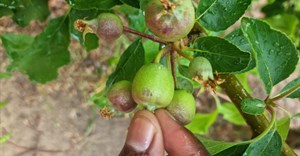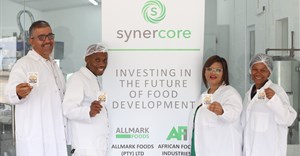
Food wastage prevention still a priority

The stark reality and ignominy of this situation is highlighted by numerous studies and research. One study conducted by R Osner, back in 1982, claimed that approximately 25% of all Britain's food wastage occurred between farm and plate. The world has increased the number of hungry stomachs considerably since then and the problem has exponentially magnified. On the opposite end of the scale, the nutritional value in food has drastically diminished.
There have been several recent consumer-marketing campaigns that address the imperfect beauty of fruit and vegetables. Promoted by a monetary discount, these advertising onslaughts encourage consumers to buy produce that does not fit the fashionable 'stereotype. Also aided and championed by well-known food celebrities, they are having an effect on the reduction of retail food waste. However, the majority of food wastage starts long before it even gets to the supermarkets.
In order to provide any meaningful reduction of food waste, we need to rethink food-manufacturing processes completely, which in essence, have not really changed since the industrial revolution. Radical transformation is now required, before we disappear beneath a mound of waste and suffer global malnutrition.
By way of example, today's traditional food processing and manufacturing systems discard between 10-40% of the material, depending on the source product. Much of this waste is upfront in the process, such as the skins and seeds, which typically contain the majority of the nutritional value.
Butternut wastage
Take the humble, golden orange butternut for instance. It is the staple of many convenience foods - including the base of most ready-to-eat infant foods. Yet, while it grows prolifically and is readily available for harvest, it is one of the most costly to prepare, with one of the highest wastage proportions with leftovers often rotting on landfill heaps. Alternatively, the castoffs may be used in animal feed, subsequently contaminated by microorganisms, and tainting our food chain from the start.
Typically, butternut needs to be de-stalked, skinned, de-pipped and then pulped before being cooked to within an inch of its life. For every kilogram, processed, approximately 350 g is thrown away. Considering that one small factory in the Western Cape generates ten tons of waste per day, and there are literally thousands of these types of factories around the world, you begin to see the true nature of this sizeable problem. Very conservatively there is at least 3,500 tons of waste (400 lorry loads a day), if one takes a thousand such factories around the world into account. This 'waste', would feed approximately nine million people on a daily basis if it could be processed.
While the waste from butternut could be ploughed back to the earth or used in animal feed, tomato waste, another globally processed bulk product is far too acidic to feed to livestock, so it is sent to landfill or interred. The same can be said of every type of fruit, vegetable or source product used in manufacturing today, even those servicing the growing new 'lifestyle' markets.
Although estimates of 8% of capital expenditure have been forecast in 2015, for new manufacturing methods to service these food and beverage trends, they still do little to consider overall food wastage.
What if?
New food sources have also been mooted over the past year or so to cope with the growing population and shrinking food growth - these encompass insects and algae and beyond. Yet, the answer to feeding the billions may be a little simpler and certainly more palatable than eating bugs. What if by processing the entire organic food source from the start, the food industry could feed more people and radically lessen the negative impact on the environment?
Alternatively, what if the waste from food processing factories could be processed in a way that could extract goodness, or be made into a palatable and nutritional foodstuff.
What if the size of food portions could be reduced, as the nutritional load is increased and the satiety factor solved. Would this not lead to an increase in total 'food productivity'?
Getting it right
Developing countries, such as India, are heeding the call, with pioneers such as Minister Harsimrat Kaur Badal, whose government department is dedicated to reducing food processing wastage. The creation of mega food parks able to deal with greater volumes more effectively are leading the way, with more established markets resistant to change and ultimately lagging.
Often there is a misperception that new technologies are expensive, require extensive education and training, incur hefty upfront costs, as existing machinery becomes obsolete and gathers dust in the corner. Factory owners/managers are slow to adopt, scared of change, tied into intricate service level agreements, or even, do not actually care about the downstream, long-term impact of their current manufacturing processes.
Driven by the bottom line, the inception of a new austerity age and a consumer call for more earth ethical systems, these attitudes are necessarily experiencing a rude awakening. As margins become ever tighter and companies rely more heavily on marketing to convince a hungrier population that the products work (when they do not) or that consumers should buy them (when they are not required), the voice of reason is finally starting to be heard.
Waste reducing practices
For there are practices, that can eliminate or at the very least, radically reduce, waste, upfront. Technology like Dynamic Cellular Disruption (DCD) and the Disruptor series of machines are able to process the whole fruit or vegetable or source material. It can instantly break down the plant cellulose structure without the use of harmful heat, enzymes or chemicals, releasing all of the actives, and increasing overall product yields.
DCD cuts the cost of manufacturing, savings of which could be passed onto jaded customers, who have to put up with thinner packaging, lesser quantities and poorer quality products at the same prices as before. The net result - better more affordable products that work, with a lesser amount required to enhance, good health. This would potentially lead to instilling a natural trust and loyalty in the consumer/brand relationship (possibly reducing reliance on clever marketing as means to engage customers)
By addressing the potential for food wastage up front, before it gets to the retail shelf, today's food manufacturers can be part of tomorrow's sustained waste and sustenance solution. The ability to process whole fruits and vegetables - whole materials - should be the benchmark against which future processing methods are measured. The challenge now is for manufacturers to join the new revolution to avoid being 'wasted'.
For more information, go to www.greencelltechnologies.com.
About Roy Henderson
Roy Henderson, CEO of Green Cell Technologies
















